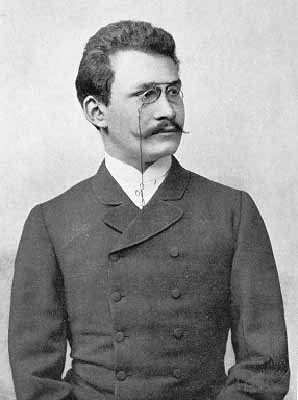Math Is Fun Forum
You are not logged in.
- Topics: Active | Unanswered
Pages: 1
#1 2024-04-24 21:27:17
- Jai Ganesh
- Administrator

- Registered: 2005-06-28
- Posts: 46,340
Minkowski space
Minkowski space
In mathematical physics, Minkowski space (or Minkowski spacetime) combines inertial space and time manifolds with a non-inertial reference frame of space and time into a four-dimensional model relating a position (inertial frame of reference) to the field.
The model helps show how a spacetime interval between any two events is independent of the inertial frame of reference in which they are recorded. Mathematician Hermann Minkowski developed it from the work of Hendrik Lorentz, Henri Poincaré, and others said it "was grown on experimental physical grounds".
Minkowski space is closely associated with Einstein's theories of special relativity and general relativity and is the most common mathematical structure by which special relativity is formalized. While the individual components in Euclidean space and time might differ due to length contraction and time dilation, in Minkowski spacetime, all frames of reference will agree on the total interval in spacetime between events. Minkowski space differs from four-dimensional Euclidean space insofar as it treats time differently than the three spatial dimensions.
In 3-dimensional Euclidean space, the isometry group (maps preserving the regular Euclidean distance) is the Euclidean group. It is generated by rotations, reflections and translations. When time is appended as a fourth dimension, the further transformations of translations in time and Lorentz boosts are added, and the group of all these transformations is called the Poincaré group. Minkowski's model follows special relativity, where motion causes time dilation changing the scale applied to the frame in motion and shifts the phase of light.
Spacetime is equipped with an indefinite non-degenerate bilinear form, called the Minkowski metric, the Minkowski norm squared or Minkowski inner product depending on the context. The Minkowski inner product is defined so as to yield the spacetime interval between two events when given their coordinate difference vector as an argument. Equipped with this inner product, the mathematical model of spacetime is called Minkowski space. The group of transformations for Minkowski space that preserves the spacetime interval (as opposed to the spatial Euclidean distance) is the Poincaré group (as opposed to the Galilean group).
Hermann Minkowski
Hermann Minkowski (born June 22, 1864, Aleksotas, Russian Empire [now in Kaunas, Lithuania]—died Jan. 12, 1909, Göttingen, Germany) was a German mathematician who developed the geometrical theory of numbers and who made numerous contributions to number theory, mathematical physics, and the theory of relativity. His idea of combining the three dimensions of physical space with that of time into a four-dimensional “Minkowski space”—space-time—laid the mathematical foundations for Albert Einstein’s special theory of relativity.
The son of German parents living in Russia, Minkowski returned to Germany with them in 1872 and spent his youth in the royal Prussian city of Königsberg. A gifted prodigy, he began his studies at the University of Königsberg and the University of Berlin at age 15. Three years later he was awarded the “Grand Prix des Sciences Mathématiques” by the French Academy of Sciences for his paper on the representation of numbers as a sum of five squares. During his teenage years in Königsberg he met and befriended another young mathematical prodigy, David Hilbert, with whom he worked closely both at Königsberg and later at the University of Göttingen.
After earning his doctorate in 1885, Minkowski taught mathematics at the Universities of Bonn (1885–94), Königsberg (1894–96), Zürich (1896–1902), and Göttingen (1902–09). Together with Hilbert, he pursued research on the electron theory of the Dutch physicist Hendrik Lorentz and its modification in Einstein’s special theory of relativity. In Raum und Zeit (1907; “Space and Time”) Minkowski gave his famous four-dimensional geometry based on the group of Lorentz transformations of special relativity theory. His major work in number theory was Geometrie der Zahlen (1896; “Geometry of Numbers”). His works were collected in David Hilbert (ed.), Gesammelte Abhandlungen, 2 vol. (1911; “Collected Papers”).

It appears to me that if one wants to make progress in mathematics, one should study the masters and not the pupils. - Niels Henrik Abel.
Nothing is better than reading and gaining more and more knowledge - Stephen William Hawking.
Offline
Pages: 1